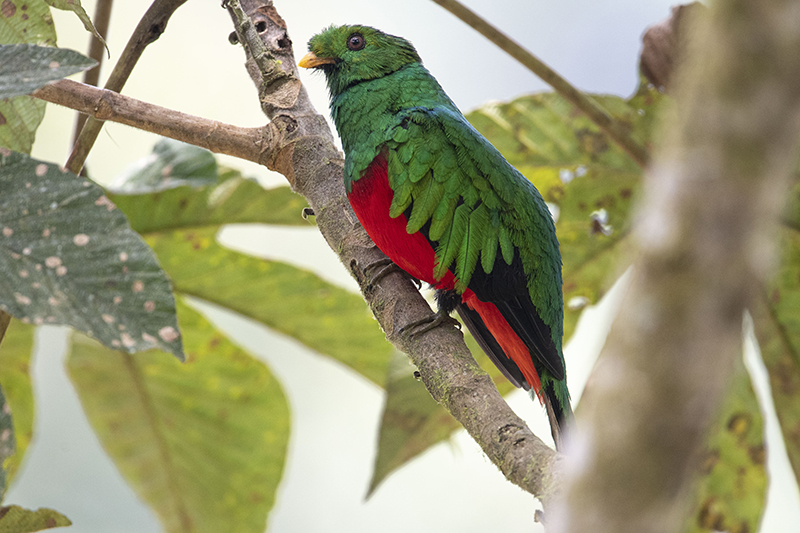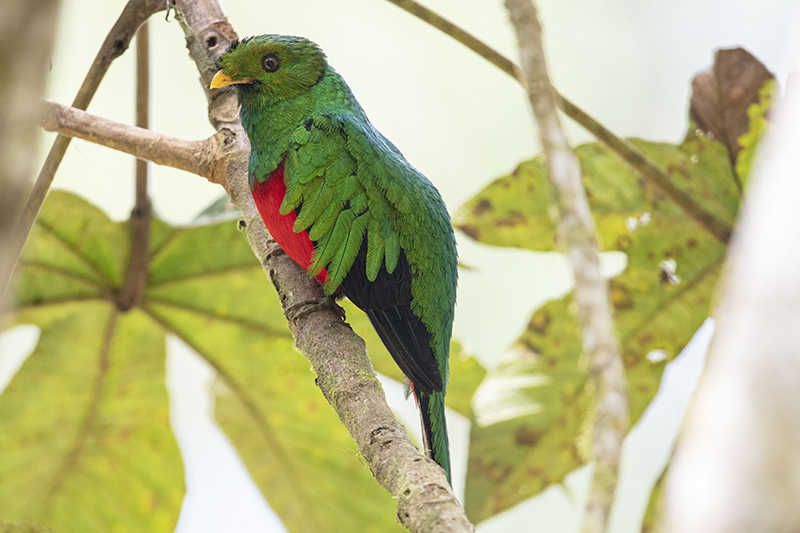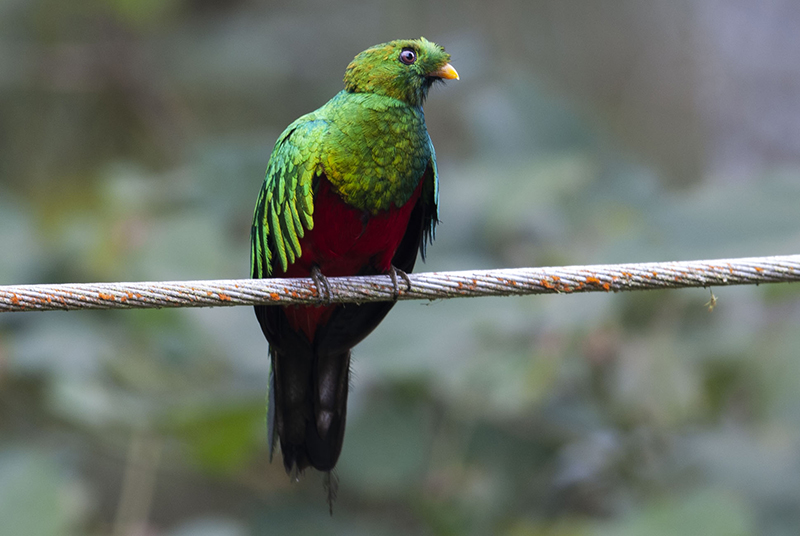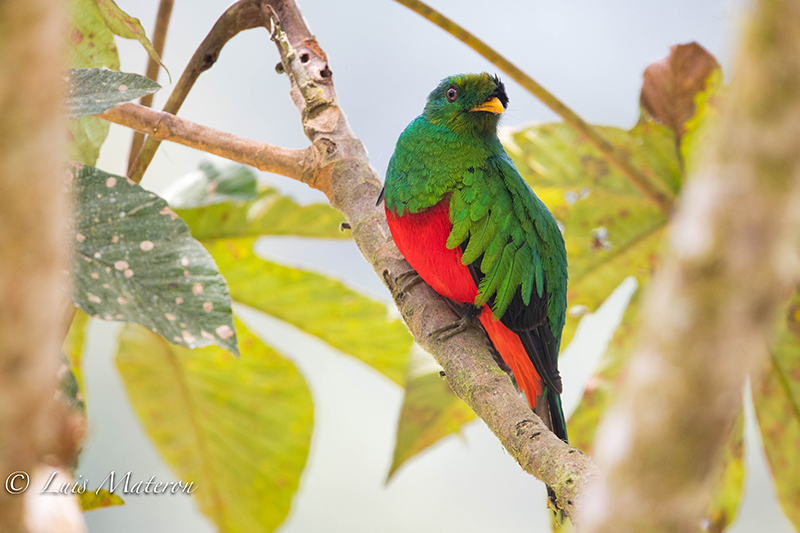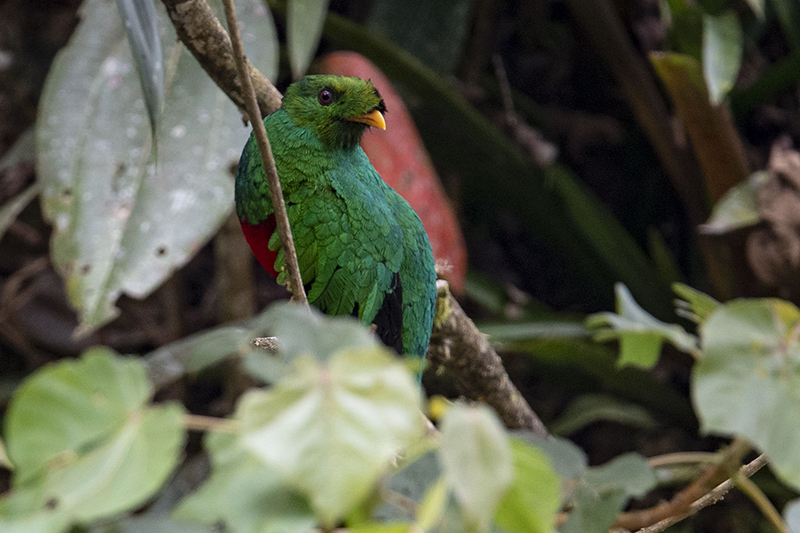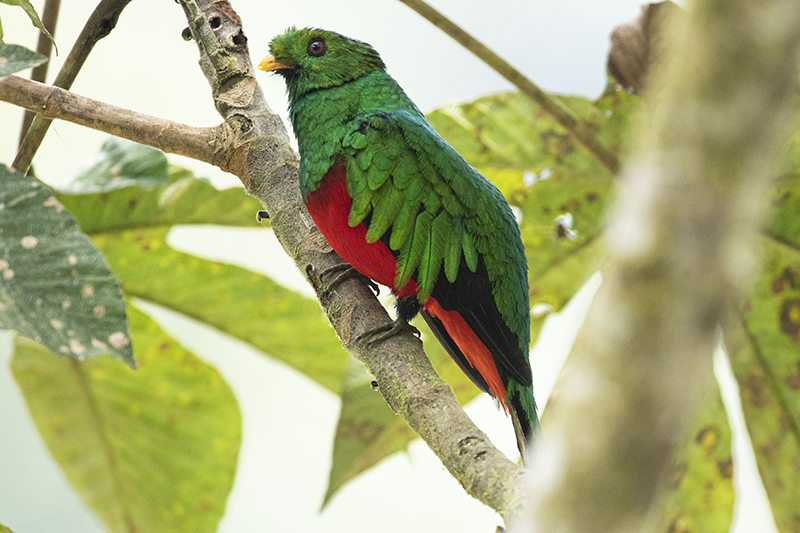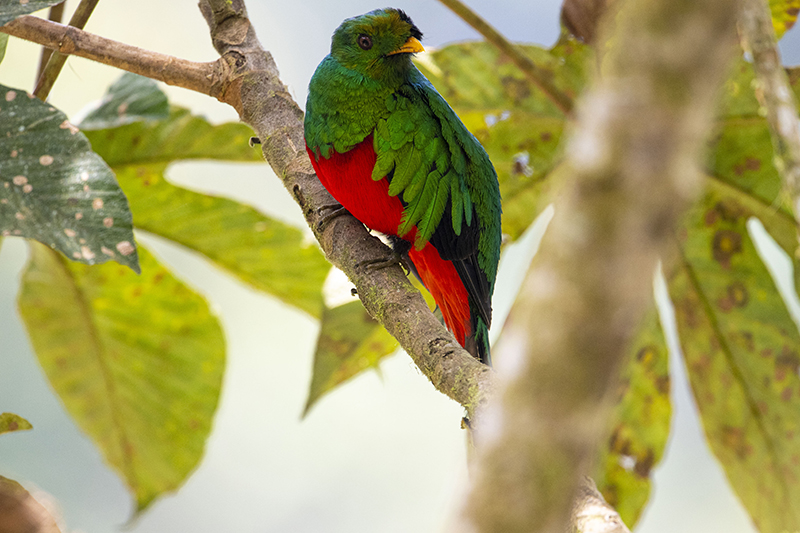Pharomachrus antisianus
The Crested Quetzal has a length of 35 cm (13.8 in) and is found in the canopy of trees in the cloudy, foggy forests of tropical and subtropical regions from 1200 to 3000 m (3900-9800 ft). They perch motionless in the canopy. A bushy tuft of feathers originates from its forehead and covers part of the bill. Males of the Crested Quetzal develop feathers with an emerald metallic green, vivid scarlet in breast and belly. The tail is deep blue and violet with white undertail that reaches up to 76 cm (30 in) in length. Its iridescent green plumage extends from the head across the back. The undersides of the tail feathers are distinctively white. The orange short bill is finely serrated. Females similar to the males but with less ornaments or vivid plumage. They have brown heads with no tufts, only the belly area is red, some green feathers in the breast, and brown in the upper belly. Both with red eyes. Eats seed, amphibians and insects. Prefers seed of Lauraceae trees. Monogamous. At mating the male performs a ‘sky dance’ to attract females. Nests excavated in decaying trees where 1 to 2 blue eggs are laid and incubated for 18 days. Fledgings leave at about 3 to 4 weeks; and, remain close to the father for several years.
El Quetzal Crestado tiene una longitud de 35 cm. Ave de colores atractivos, brillantes y profundos que habita en árboles de bosques húmedos nubosos de las regiones tropicales y subtropicales desde los 1200 a 3000 m de altura. Generalmente se le encuentra inmóvil y tranquilo en ramas cerca de fuentes de alimento y a veces díficil de ver. De ojo color rojo. El macho tiene un penacho de plumas naranja brillante, combinado con algunas plumas escarlata que va desde la parte posterior de la cabeza hasta el inicio de pico. Plumaje esmeralda metálico en el dorso un rojo profundo e intenso adorna su vientre. Cola con tres pares de plumas rectrices externas barradas que le proporcionan empuje y sostenienen en vuelo. La hembra tiene cabeza y vientre marrón, algo de verde en el pecho y parte inferior del vientre y con cobertoras inferiores de la cola color rojo y además carece de penacho. Aves alegres y bulliciosas. Las trogoniformes son conocidas por perforar nidos en troncos de árboles viejos con su acerrado pico. La postura es de 1 a 1 huevos azulosos que son incubados durante 18 días. Las crías dejan el nido a la tercera o cuarta semana. Permanecen cerca de su padre por varios años.
LAM_5899
LAM_5936
LAM_5924
LAM_5961
DSC_0117
DSC_0122
LAM_5995
LM1_5909
LAM_5912
LAM_6005
LAM_5897
LAM_5934
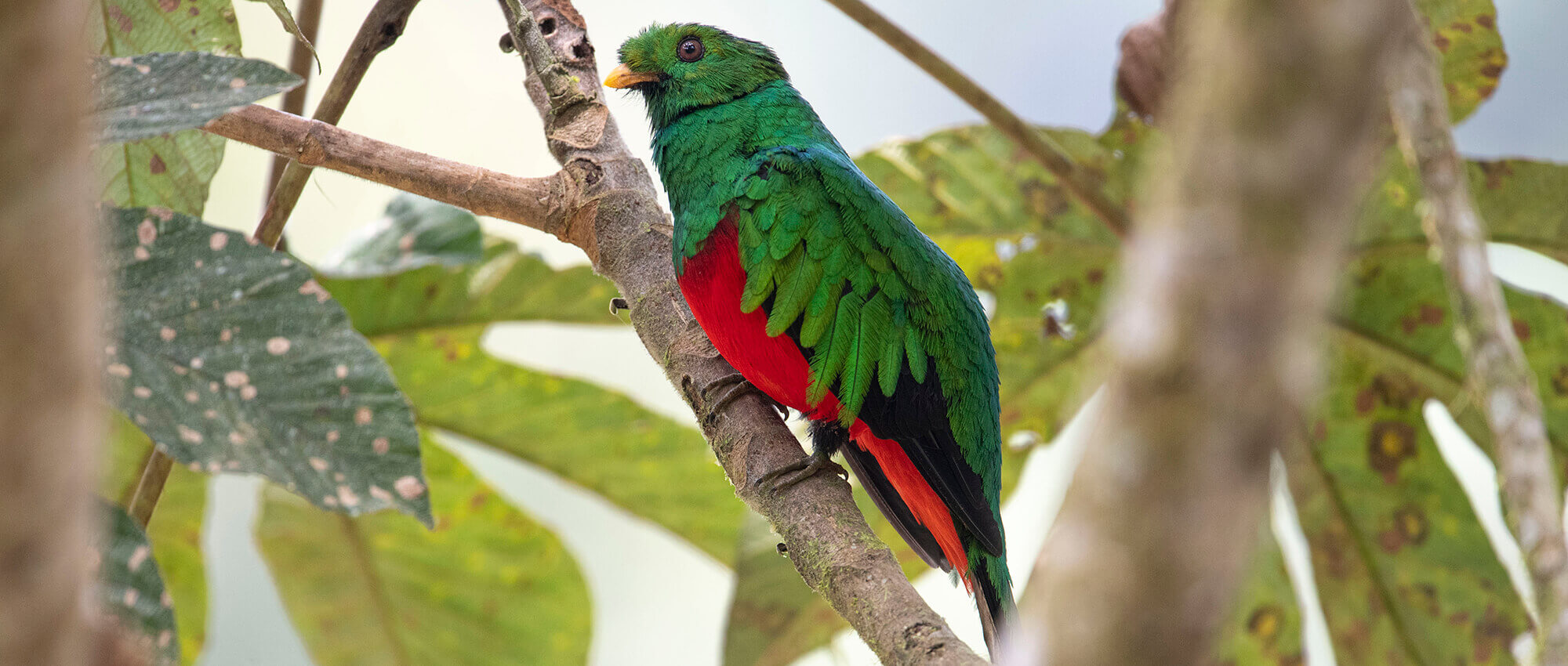
CRESTED QUETZAL IS A LARGE, SHOWY, AND SHY BIRD
el Quetzal CRESTADO es UN AVE grande, coloridA y TÍMIDA
